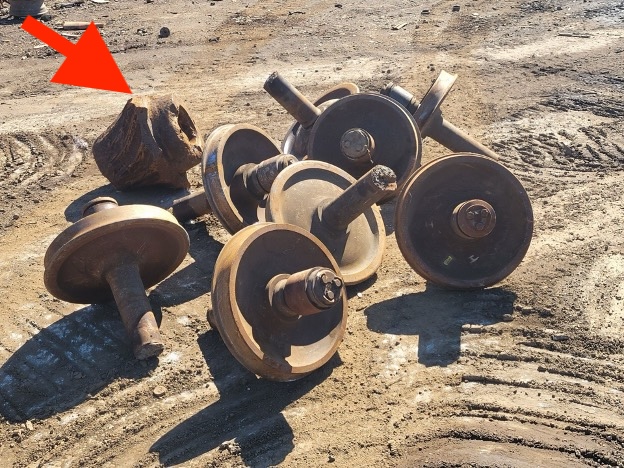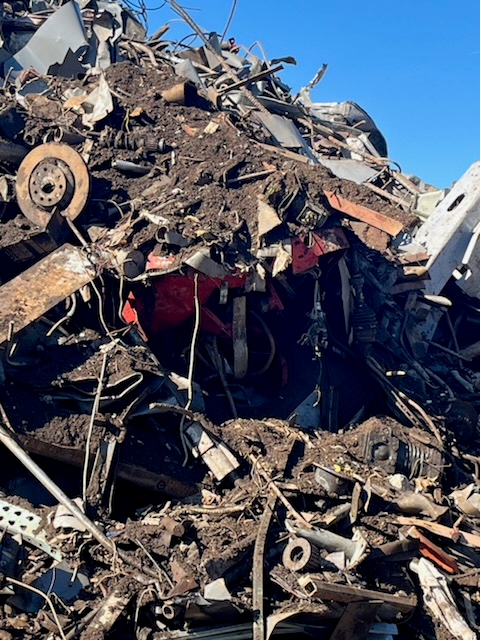Sub-standard scrap poses significant risk to your shredder, people, the surrounding environment — and your entire business. One explosion due to a compressed tank could mean months of closure — or business bankruptcy and closure.
In this blog post, I’ll cover the materials that can wreak havoc with your inbound stream, as well as causing minor to major issues — from a clogged system or broken parts to increased costs and environmental hazards.
Heavy or dense raw material
“Heavies” are raw materials that are simply too heavy in size and density/mass and therefore can’t be easily shredded. Heavies inevitably damage internal components of your shredder, including castings such as hammers and pins, and material handling systems.
Damage from heavies can cause prolonged periods of downtime and safety risks to operations personnel when replacing damaged components.

Damaged wear part (upper left) due to “heavies.”
Dirt, rocks and non-metallics

Dirt and rocks act as an abrasive inside the shredder — shortening the lifespan of wear parts and material handling systems.
Rocks are especially dangerous at they can become projectiles when shredded, posing safety hazards to nearby personnel. Depending on size, rocks can become lodged in the shredder box, resulting in downtime.
Damp or moist dirt dries out and becomes dust, which overtaxes some shredder cyclone systems. If the dirt contains oil, this dust is now considered a Volatile Organic Compound (VOC), which directly impacts air quality for personnel and the surrounding environment.
Dirt, rocks, and non-metallics also increase landfill ASR disposal costs.
Hazardous material
Hazardous material includes gasoline storage tanks, sealed units, compressed gas cylinders, and materials that contain hazardous waste materials.
Due to their propensity to explode when shredded, gas tanks, sealed units, and compressed gas cylinders are very dangerous and costly! The resulting explosion can damage the shredder and poses extreme danger to employees.
Fire is also a huge concern as it can can spread to your adjacent raw material and ASR piles — shutting down your yard for months and incurring insurance claims, etc.
Liquid and solid (or powderized) hazardous chemical wastes can contaminate your ASR and scrap — causing potential health issues for employees when they become airborne, as well as potential environmental issues due to VOCs.
Tips for preventing sub-standard material from entering your inbound feed stream
✔️ Conduct training on what constitutes quality raw material and then develop a rigorous raw material inspection process. Give personnel the power to enforce it across the board – no exceptions.
✔️ Instruct your commercial and operational personnel to interface with suppliers on what raw materials are acceptable and what’s not.
✔️ Employ a “carrot and stick” approach by rewarding raw material suppliers that deliver superior quality scrap. Penalize inferior quality suppliers monetarily or deny access to your facility in extreme measures.
✔️ Employ technological measures, such as g x-ray, to view raw materials on infeed conveyors, or an air quality monitoring system. A fire suppression system, or at the very least training and plans for your personnel, should also be part of your prevention plan.
Eliminating sub-standard material from your inbound stream will take some planning and effort, but will deliver huge benefits, including peace-of-mind, a safety-first mentality in your yard, and significantly reduced risk, costs, and downtime.



